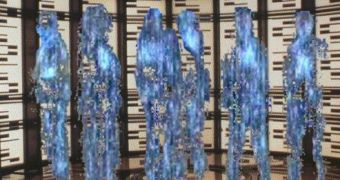We know teleportation is possible, physicists have previously been able to teleport light particles and electrons, so why aren't we teleporting to work yet? Well, according to scientists, one particle is one thing, E+30 (or 1 followed by 30 zeros) are too many. A human being, or any other large structure for example, is simply too large to teleport, at least for now. Just scanning and storing all the information regarding the particles in a complex body such as that of a human is currently far fetched, not to mention that all this information would need to be transmitted instantaneously to another location, in order to recompose it.
MIT physicists, on the other hand, are optimistic and don't entirely rule out the possibility that humans would be capable to construct such devices. According to Edward Fahri, the only problem is that we do not have the technological possibility to create such devices yet. Quantum teleportation, or teleporting an elementary particle for example, requires that the information regarding the respective particle to be send before the actual teleportation process takes place.
A common problem related to quantum teleportation is the fact that the process of transporting the information is strictly restricted to the limitations imposed by the maximum speed in the universe, thus one cannon reconstruct an object instantaneously or in any locations of the universe. Reconstruction means that each particle must have exactly the same state as before the teleportation; but this is also highly restricted by Heisenberg's uncertainty principle which states that a particle's position cannot be accurately determined when measuring its momentum and vice versa. How do we know that the reconstructed person is the exact copy of the teleported one, or how do we know its memory and thoughts haven't been altered?
MIT physicist Max Tegmark argues that we're looking in the wrong place, and we should harness the properties of space-time instead. It is currently unknown if wormholes exist or we will ever be capable of controlling the massive amounts of power required to determine a distortion in the fabric of the universe, but physics predicts the existence of such things.
Wormholes may allow faster-than-light travel between two remote locations, without locally breaking the speed of light limit. And where can we find wormholes except for the elusive black holes? Physics also predicts that such structures would be extremely unstable, popping out of existence as fast as they form. Furthermore, the black hole would require special characteristics such as circular singularities, but if we cannot see the singularity of a black hole, how do we know for certain that it is what it appears to be?
So what can we actually do? Signals can't travel faster than light between two transmitters, information cannot be scanned and reconstructed at fast enough speeds, Heisenberg's uncertainty principle partially restricts this process, we know almost nothing about black hole singularities, and wormholes are unstable. Not much, as you can see!
Tegmark has his doubts that teleportation will ever become possible, but we could still reach speeds comparable to that of light by developing propulsion systems harnessing the interactions between matter and anti-matter, for example.

 14 DAY TRIAL //
14 DAY TRIAL //